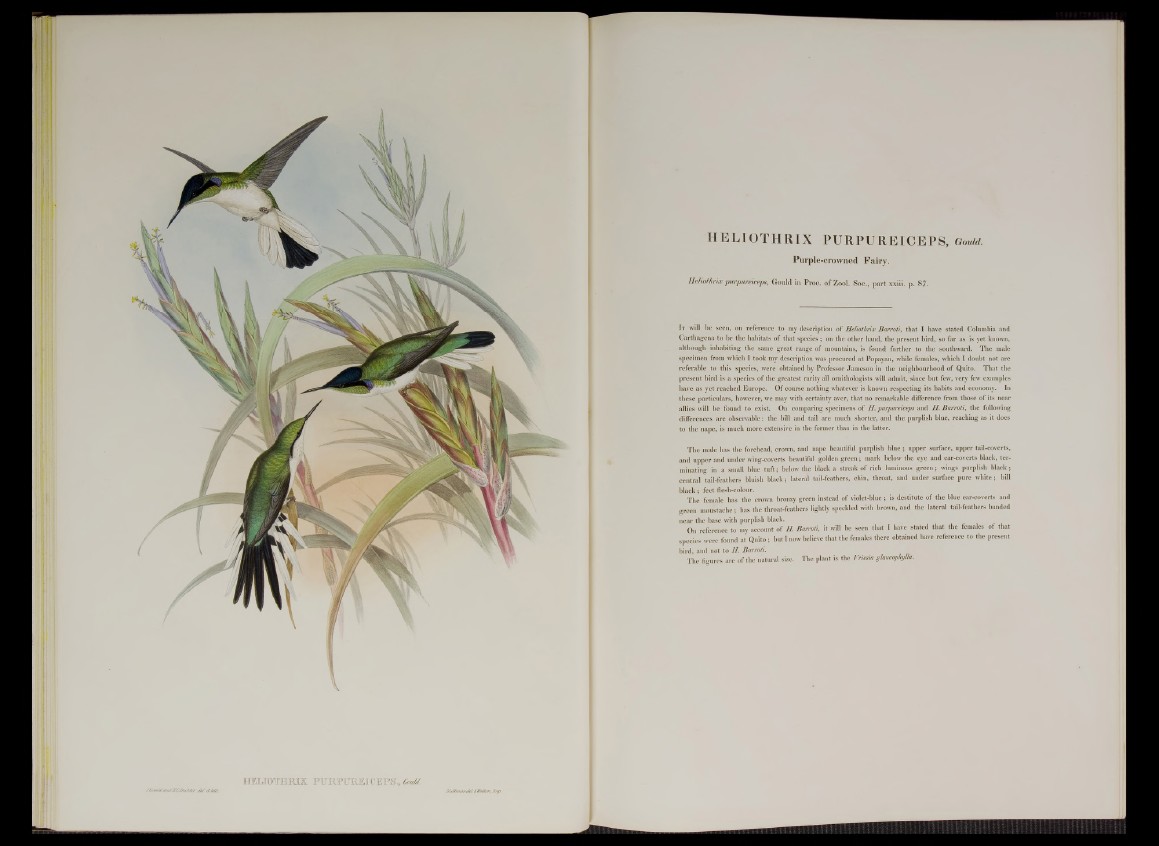
HELXOTHRXX PIXRPTJR.I 'E P S , CmM
HELIOTHRIX PURPUREICEPS, Gould.
Purple-crowned Fairy.
Heliothrix purpureiceps, Gould in Proc. of Zool. Soc., part xxiii. p. 87.
It will be seen, on reference to my description of Heliothrix Barroti, that I have stated Columbia and
Carthagena to be the habitats of that species ; on the other hand, the present bird, so far as is yet known,
although inhabiting the same great range of mountains, is found further to the southward. The male
specimen from which I took my description was procured at Popayan, while females, which I doubt not are
referable to this species, were obtained by Professor Jameson in the neighbourhood of Quito. That the
present bird is a species of the greatest rarity all ornithologists will admit, since but few, very few examples
have as yet reached Europe. Of course nothing whatever is known respecting its habits and economy. In
these particulars, however, we may with certainty aver, that no remarkable difference from those of its near
allies will be found to exist. On comparing specimens of H. purpureiceps and H. Barroti, the following
differences are observable: the bill and tail are much shorter, and the purplish blue, reaching as it does
to the nape, is much more extensive in the former than in the latter.
The male has the forehead, crown, and nape beautiful purplish blue; upper surface, upper tail-coverts,
and upper and under wing-coverts beautiful golden green; mark below the eye and ear-coverts black, terminating
in a small blue tuft; below the black a streak of rich luminous green; wings purplish black;
central tail-feathers bluish black; lateral tail-feathers, chin, throat, and under surface pure white; bill
black; feet flesh-colour.
The female has the crown bronzy green instead of violet-blue ; is destitute of the blue ear-coverts and
green moustache; has the throat-feathers lightly speckled with brown, and the lateral tail-feathers banded
near the base with purplish black.
On reference to my account of H. Barroti, it will be seen that I hare stated that the females of that
species were found at Quito ; bnt I now believe that the females there obtained have reference to the present
bird, and not to H. Barroti.
The figures are of the natural size. The plant is the Vriem glaacophyUa.